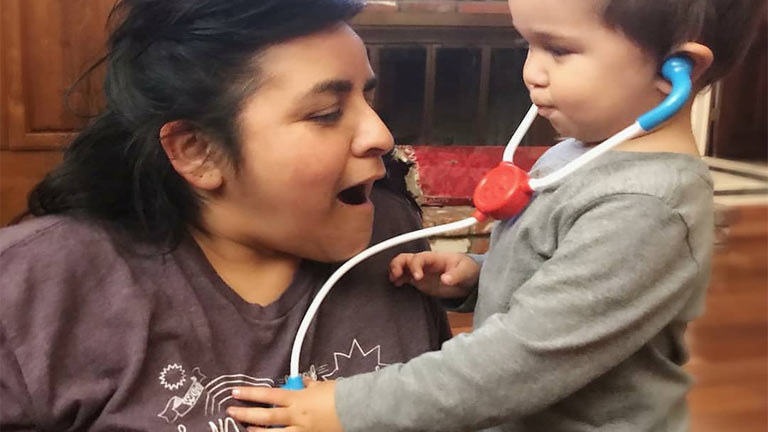
Cataracts are one of the most common causes of vision loss in people. It usually occurs as people get older and the lens of the eye becomes clouded due to some reason. This condition may not be fatal but is highly detrimental to eyesight.
Just imagine that you are out in the open and the lights appear too bright and the colors are dull. You won’t be able to see the world clearly. These are the early symptoms of cataracts. As the condition advances, the symptoms become worse and the vision and function of the eyes are also more at risk.
Besides these, cataracts also create other challenges for the patients. Today, we will discuss the common problems faced by people who suffer from cataracts and what are their treatment options.
Common Problems Faced by Cataract Patients
Once cataracts arise, the patient starts experiencing different problems that are quite common. Here are some common issues faced by cataract patients on a daily basis.
1. Blurry Vision
This is the most common problem that arises in cataract patients. As the eye lens becomes cloudy, the image is not formed properly on the retina. Due to this, the vision gets blurry and the condition only gets worse with time.
2. Poor Night Vision
As the eye lens becomes cloudy, the eye’s adaptability to the intensity of the light also changes. Due to this, the night vision is severely affected. In this scenario, the patient can’t see clearly in the dark environment and the exposure to light appears extremely glaring for the eyes.
The light gets diffracted due to the cloudy lens and a halo appears around the light sources. As a result, it becomes difficult to perform routine activities like driving difficult and potentially dangerous at night.
3. Yellowish Vision
Another common problem faced by cataract patients is that everything appears yellowish in color due to the clumps of protein deposited on the eye lens. This symptom appears once the condition is left untreated for a long time. Gradually, the patient is not even able to distinguish between different colors and see a tint of yellow in every image.
4. Double Vision
The diffraction caused due to the cloudy lens also creates the problem of double vision. This will cause a single object to appear double in one or both eyes. The condition is called diplopia and it is also painful for the eyes. If the patient develops double vision, he/she may experience pain around the eyes and the eyelids may also become droopy.
5. Frequent Headaches
As cataracts make it difficult for the eyes to receive light and images, the pressure and strain on the eyes increase significantly. Due to this, the patient starts getting headaches which only become frequent with time.
6. Frequent Changes in Optical Power
This is a common problem and symptom for cataract patients. The optical power keeps on changing quickly as the condition advances. The patient faces a higher risk of developing myopia after having cataracts. As the optical power changes, the patient will also need new visual aid frequently which is also expensive.
Losing vision due to cataracts can be devastating for the patients. Thankfully, cataract is a curable disease. If you are facing any of these problems and suspect that you may have a cataract, you can get in touch with daycare providers like Pristyn Care and get help from their experienced cataract surgeons to cure the disease permanently.
How cataracts are treated?
In the earlier stages of cataracts, visual aids like glasses are enough to improve vision. However, if the visual aid fails, you can always rely on surgical procedures. Surgery is the only cure for cataracts and there are various surgical techniques available for cataract treatment.
Generally, a doctor determines which type of surgery is correct for you after an accurate diagnosis. For most people, cataract surgery is not immediately required as they advance at a very slow pace. However, in people with diabetes, cataracts can worsen rapidly and you may need immediate treatment.
The two most common approach for cataract treatment are:
- Microincision Cataract Surgery- This approach involves making a micro-size incision that is less than 1.8 mm to reduce the invasiveness and risks of the surgical procedure. It also has other benefits like low impact on corneal biomechanics, lower risk of iris prolapse, better post-surgery corneal optical quality, etc.
- Femtosecond Laser-Assisted Cataract Surgery- This type of approach involves making incisions in the eyes using the laser beam rather than a scalpel. The femtosecond laser cuts the tissue through a phenomenon called photodisruption and allows the surgeon to reduce collateral tissue damage. It also improves the versatility and precision of cataract surgery.
Delaying treatment of cataracts rarely affects the results or effectiveness of the surgery. Hence, you can take your time to analyze the benefits and discuss the risks of cataract surgery with your doctor.
The surgical treatment for cataracts involves removing the natural eye lens and replacing it with artificial intraocular lenses that last for a lifetime. There are various types of cataract lenses available, such as monofocal, multifocal, trifocal, and toric lenses that resolve refractive errors like myopia, hyperopia, and astigmatism along with cataracts.
These are advanced technologies for cataract treatment that helps people to resolve their eye problems in a quick and efficient way. However, if you have other eye problems, you may need eyeglasses or contact lenses to correct your vision.
The Bottom Line
Cataracts can be very problematic, but fortunately, there is a cure available for this disease. So, you only need to get in touch with an expert cataract surgeon and consult them properly. The surgeon will help you find the right type of lens for the replacement of the natural lens.
If you need cataract surgery in both eyes, then you can discuss this matter with your doctor and schedule the surgery as soon as the first eye heals completely. Remember that if you want to undergo cataract surgery safely, you should rely on an experienced surgeon who specializes in using the advanced MICS and FLACS technique with precision.




